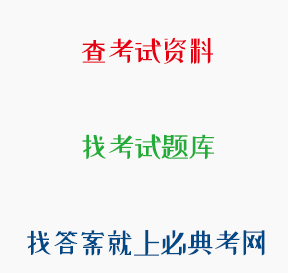正确答案: B
Golden time.
题目:请阅读 Passage 2,完成1~5小题。 Passage 2 Taylor Swift,the seven-time Grammy winner,is known for her articulate lyrics,so there was nothing surprising about her writing a long column for The Wall Street Journal about the future of the music industry.Yet there's reason to doubt the optimism of what she had to say. "This moment in music is so exciting because the creative avenues an artist can explore are limitless," Swift wrote."In this moment in musiC.stepping out of your comfort zone is rewardeD.and sonic evolution is not only accepted ...it is celebrated.The only real risk is being too afraid to take a risk at all." That's hard to reconcile with Nielsen's mid-year U.S.music report,which showed a 15 percent year-on-year drop in album sales and a 13 percent decline in digital track sales.This could be the 2013 story all over again,in which streaming services cannibalize their growth from digital downloads,whose numbers dropped for the first time ever last year,except that even including streams,album sales are down 3.3 percent so far in 2014.Streaming has grown even more than it did last year,42 percent compared to 32 percent,but has failed to make up for a general loss of interest in music. Consider this: in 2014 to date,Americans purchased 593.6 million digital tracks and heard 70.3 million video and audio streams for a sum total of 663.9 million.In the comparable period of 2013,the total came to 731.7 million. Swift,one ofthe few artists able to pull off stadium tours,believes it's all about quality."People are still buying albums,but now they're buying just a few of them," she wrote."They are buying only the ones that hit them like an arrow through the heart." In 2000,album sales peaked at 785 million.Last year,they were down to 415.3 million.Swift is right,but for many of the artists whose albums pierce hearts like arrows,it's too late.sales of vinyl albums have increased 40.4 percent so far this year,according to Nielsen,and the top-selling one was guitar hero Jack White's Lazaretto.The top 10 also includes records by the aging or deaD.such as the Beatles and Bob Marley & the Wailers.More modern entries are not exactly teen sensations,either: the Black Keys,Beck and the Arctic Monkeys.None of these artists is present on the digital sales charts,including or excluding streams.The top-selling album so far this year,by a huge margin,is the saccharine soundtrack to the Disney animated hit,"Frozen" . When,like me,you're over 40 and you believe the music industry has been in decline since in 1993 (the year Nirvana released in Utero),it's easy to criticize the music taste of "the kids these days" ,a term even the 23-year old Swift uses.My fellow dinosaurs will understand if they compare 1993's top albums to Nielsen's 2014 list.But these kids don't just like to listen to different music than we do,they no longer find much worth hearing. The way the music industry works now may have something to do with <u>that</u>.In the old days,musicians showed their work to industry executives,the way most book authors still do to publishers (although that tradition,too,is eroding).The executives made mistakes and were credited with brilliant finds.Sometimes they followed the public taste,and sometimes they strove to shape it,taking big financial and career risks in the process.These days,according to Swift,it's all about the social networks."A friend of mine,who is an actress,told me that when the casting for her recent movie came down to two actresses,the casting director chose the actress with more Twitter followers," Swift wrote."In the future,artists will get record deals because they have fans-not the other way around." The social networks are fickle and self-consciously sarcastic (see the recent potato salad phenomenon).They are not about arrow-through-the-heart sincerity.That's why YouTube made Psy a star,but it couldn't have been the medium for Beatle maniA.Justin Timberlake has 32.9 million Twitter followers,but he's no Jack White. In the music industry's <u>heyday</u>,it produced a lot of schlock.But it got great music out to the masses,too.These days,it expects artists to do their own promotion and for those who less good at that than at making musiC.it may mean not getting heard.For fans it means less good music to stream and downloaD.Well,there's always the warm and fuzzy world of vinyl nostalgiA.I guess.
解析:词汇题。heyday所在的句子为“In the music industry's heyday,it produced a lot of schlock.But,it got great music out to the masses,too.”可以看出,这两句用一般过去时,叙述的是音乐界过去的辉煌成就,句意为“在音乐的黄金时代,虽然作品参差不齐,但也为大众带来了很多经典音乐”。故本题选B。
学习资料的答案和解析:
正迁移
Product-oriented
医学界
培养能力
探询性问题
Of the dangers in everyday life, the author thinks that people have most to fear from ________.
the uncertain
- When a teacher asks students to discuss how the writer's ide
- 依据《中华人民共和国未成年人保护法》,依法设置的专门学校(
- 如果学生要学习的知识内容比较复杂、结构化程度很高,又必须在较
- 指出下列推理中正确的一项是:( )
- 以下不属于教师的义务的是( )。
- 教师资格证-高中英语2022冲刺密卷答案解析(06.13)
- 学生干部选举前,有的家长给班主任陈老师送来礼物请求照顾,陈老
- 课堂提问需要遵循哪些原则?课堂提问能提高学生哪方面的能力?
- 教师让四名学生每人去拿一只桌球,不论什么颜色。学生拿了球后,
- 材料: 创新是一个人人熟知的名字,但创新到底意味着什么?

 川公网安备 51012202001360号
川公网安备 51012202001360号